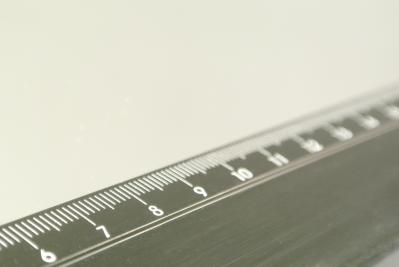
Life Cycle
Assessment (LCA)
Measure the environmental impacts at every stage of your product’s or service’s life cycle, turn data into concrete actions, and communicate your commitment to sustainability.
Life Cycle Assessment (LCA) is a reliable, objective, and standardized methodology that enables the evaluation of the environmental impacts of a product or service throughout its entire life cycle.
The goal of an LCA study is to provide a comprehensive overview of a product’s or service’s interactions with the surrounding environment, in order to understand the environmental consequences caused directly or indirectly by it.
What is Life Cycle
Assessment (LCA)?
Life Cycle Assessment (LCA) is much more than a technical calculation: it is a detailed snapshot of how a product or service interacts with the environment throughout its entire life cycle.
An LCA study analyzes and considers:
- raw materials;
- transport and logistics;
- manufacturing;
- usage;
- and end-of-life (recycling or disposal).

Relevant Standards and Regulations
The international regulatory framework for conducting LCA studies is defined by the ISO 14040 series, specifically:
- UNI EN ISO 14040:2021 - Environmental Management, Life Cycle Assessment, Principles and Framework
Defines the principles and framework of an LCA study. - UNI EN ISO 14044:2021 - Life Cycle Assessment, Requirements and Guidelines
Establishes the applicable requirements for conducting LCA.
There is also a standard for assessing the life cycle of organizations:
- UNI ISO 14072:2025: Environmental Management, Life Cycle Assessment, Requirements and Guidelines for Organizational LCA

How Life Cycle
Assessment Works
LCA is a voluntary tool and can be adopted by both large companies and SMEs. More and more organizations are choosing to conduct an LCA study to improve the sustainability of their products and effectively respond to market and B2B client demands.
Phases of an LCA Study
- Definition of Goal and Scope
The first step of an LCA study involves clearly defining its scope. This includes specifying the objectives and goals, the functional unit, the reference year, and the system boundaries. - Data Collection and Inventory Analysis
Qualitative and quantitative data are collected for each process unit within the system boundaries. The analysis quantifies the material and energy flows entering and leaving the system throughout the life cycle of the product or service being studied. - Impact Assessment
This phase evaluates the significance of the potential environmental impacts using the results from the life cycle inventory analysis. The main impact categories include:- climate change
- resource depletion
- human health and safety effects
- ecological effects - Interpretation
In this phase, the results of the inventory analysis and impact assessment are combined and interpreted to draw conclusions and formulate recommendations. - LCA Report
The LCA report is a comprehensive document that describes all phases of the study. It includes the assumptions and hypotheses made, a description of the products and associated processes, and the results obtained for each individual product. - Critical Review by a Third Party
The critical review of the LCA study, conducted by an independent third party according to ISO 14040, ensures that the methods used are consistent with ISO standards and scientifically and technically valid.
Why Conduct an LCA Study
and How Is It Certified?
LCA studies offer several key benefits:
- Identify environmental improvement opportunities within a product's life cycle
- Support strategic planning and (re)design of products and processes
- Enable environmental declarations such as EPDs, Carbon Footprint (ISO 14067), and PEF
- Provide marketing and stakeholder communication tools based on proven environmental performance
How Is an LCA Study Certified?
There is no single universal “label” for LCA. What matters is that it is carried out and, when needed, reviewed according to ISO standards.
Main Options:
- Critical Review
Required when publishing results or comparing with other products (e.g., "our product is more sustainable"). Conducted by an independent third party, ensures consistency with ISO standards and methodological accuracy. - EPD - Environmental Product Declaration
A Type III environmental declaration based on LCA. Verified by an accredited third party and published by a Program Operator. Widely recognized in public tenders and procurement. - Product Carbon Footprint (CFP)
Measures the climate change impact (GHG emissions – CO2e). Results can be validated/verified by an accredited body.

How we support you with Life Cycle
Assessment (LCA)
Pegaso Management offers a complete service for companies undertaking LCA studies for their products or services.
Our experts support clients through every phase:
- Initial assessment
We analyze the product's life cycle—from raw materials to end-of-life—defining objectives and study boundaries. - Data collection
We assist in gathering data using practical templates and involving suppliers and, if needed, customers. - Data analysis
We process data using specialized software and certified databases, turning it into reliable calculation models. - LCA report
We deliver a clear report outlining environmental results and proposing concrete actions to reduce impacts. - Critical Review
If you wish to publish the results, we support you through third-party verification and ISO-compliant audit phases.
We collaborate with companies across Italy and abroad. We've conducted LCA projects for leading firms in various industrial sectors. Thanks to our experience, we guide businesses through each phase, ensuring tangible results and regulatory compliance.
Related Services
Discover some of our sustainability services designed to help improve your environmental, social, and governance performance.
ORGANIZATION

FAQ
Is LCA mandatory?
Not always. However, it becomes necessary if you want to:
- publish verified environmental data (e.g., EPD, CFP, PEF)
- comply with sustainability reporting obligations (CSRD/ESRS) with credible supply chain data
Can I compare my products to competitors’?
Yes, but if made public, your LCA must be reviewed by independent experts (critical review). This is the only way to ensure the comparison is robust and defensible.
What’s the difference between LCA and EPD?
LCA = technical study calculating environmental impacts.
EPD = third-party verified “environmental ID” of the product, published according to international standards.
LCA vs Carbon Footprint (CFP)?
CFP (ISO 14067) focuses only on CO2e emissions (climate change).
LCA considers all main environmental impacts (energy, water, raw materials, waste, etc.).
Is LCA useful for the Sustainability Report?
Absolutely. LCA provides concrete, measurable data on product environmental impacts (emissions, materials use, water consumption, waste, etc.). These figures are essential to:
- compile the Sustainability Report transparently and credibly
- meet CSRD/ESRS requirements, especially for environmental indicators and Scope 3 supply chain data
- show stakeholders that your commitment is backed by internationally recognized analyses (ISO 14040/44)